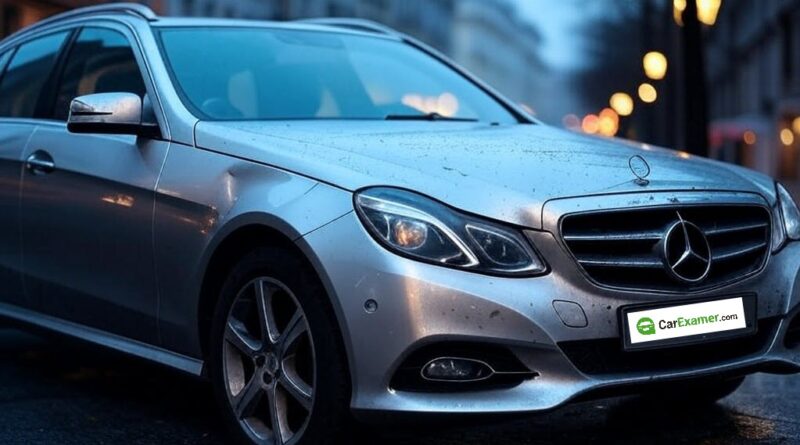Mercedes E-Class Problems: What To Know Before Buying
The Mercedes-Benz E-Class is widely regarded as one of the most comfortable, stylish, and reliable executive cars on the road. Whether you’re considering a sedan, estate, coupe, or convertible, the E-Class delivers smooth driving, advanced technology, and strong performance. However, like any car, it is not without a few known issues, especially in older models or high-mileage vehicles. If you’re thinking about buying a used E-Class — especially from the W211 (2002–2009), W212 (2009–2016), or W213 (2016–2023) generations — it’s important to understand the most common Mercedes E-Class problems and how to avoid costly repairs.
1. Air Suspension (AIRMATIC) Failures
Many E-Class models, particularly higher trims and estate versions, come with AIRMATIC air suspension. While it offers excellent comfort, it can develop faults over time.
Common symptoms include:
- Uneven ride height or sagging
- Suspension warning light
- Excessive bouncing or poor ride quality
Air suspension repairs can be costly, so always test the system thoroughly and inspect for leaks or noises.
2. Oil Leaks and Seal Failures
Engine oil leaks are a common issue in both petrol and diesel models, especially in older W211 and early W212 vehicles.
Typical signs include:
- Oil stains under the vehicle
- Low oil level between services
- Smell of burning oil
Leaks often come from valve cover gaskets, timing chain covers, or oil cooler seals. Early detection can help prevent engine damage.
3. Timing Chain and Balance Shaft Problems (M272/M273 Engines)
The V6 petrol engines (M272 and M273) used in some W211 models are known for balance shaft gear wear and timing chain stretching.
Symptoms include:
- Check engine light
- Rough idle or misfire
- Loss of power
This is a major repair. Always verify the engine code and service history before purchasing a V6 model from this period.
4. Automatic Transmission Issues
The 7G-Tronic automatic gearbox is durable but requires regular maintenance. Neglected servicing can result in gear shifting problems.
Look out for:
- Delayed or harsh shifts
- Gearbox warning messages
- Slipping gears
Transmission fluid and filter should be changed every 40,000 to 60,000 miles to ensure longevity.
5. Electrical and Sensor Faults
The E-Class includes complex electronics, especially in later models, which can develop faults as the car ages.
Common problems include:
- Parking sensor and camera malfunctions
- Infotainment or COMAND system issues
- Central locking or electric window failures
- Random dashboard warning lights
Most issues are related to aging control modules or low battery voltage and are usually repairable with diagnostics and software updates.
6. Rust in Early Models (W210 and W211)
Earlier generations, especially the W210 and early W211, are known for rust problems.
Check these areas carefully:
- Rear wheel arches
- Door bottoms and seals
- Trunk lid edges
- Underbody and suspension mounts
Later models have improved rust protection, but a physical inspection is still recommended.
Final Thoughts: Is the Mercedes E-Class Reliable?
Yes. When well maintained, the Mercedes E-Class is a comfortable and durable luxury vehicle. Later models (especially the W213) show improved build quality, performance, and reliability.
Before buying:
- Review full service history
- Inspect common failure points
- Consider a pre-purchase inspection from a Mercedes specialist
With the right care, a Mercedes E-Class can offer years of refined driving and executive-level comfort.
Buying a used VW. Buying used vauxhall, BMW, Jaguar, Ford, Volvo, Range rover, Bentley, Aston Martin, Porsche, Ferrari, Lamborghini, Maserati, Hyundai, Tesla, Honda, Pagani

